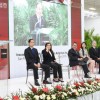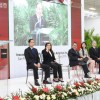For fiscal 2015 as a whole, many Japanese auto parts manufacturers anticipate a turn for the worse. This is particularly true overseas, where besides deceleration in China and elsewhere in Asia, and a sluggish South American economy, output is down at European car companies. The Brazilian economy began shifting down last year, and it will likely continue to do so...



